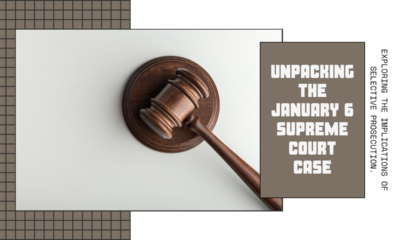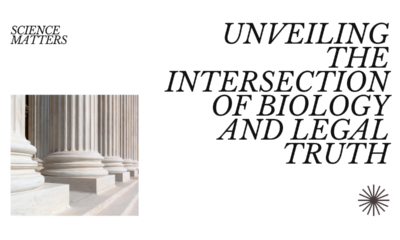Christianity Today
The Christmas Story
The Christmas story has more scholarly support than many people realize – evidence that Jesus Christ did exist.
Merry Christmas! Sadly, too many people in this world want that greeting to go out of fashion. The reasons for such attitudes don’t concern us today, but one of their so-called “proofs” does. They seize upon what they say are historical impossibilities in the Gospel accounts, to say, “There! You see?” And what they want people to “see” is that Christ never lived, or that He was not What He said He was. Today, as we remember Christ’s birth (for that is what Christmas is all about), we will examine the account of His birth, and why it created confusion that atheists and agnostics try to exploit.
The most detailed version of the Christmas story
Of the Four Evangelists (literally, those who brought a Good Message to humankind), Luke the Physician gives the greatest detail. He even begins with the conception and birth of John the Baptist (literally, Baptizer), and a chronological fix. To be specific:
- Zacharias (father of John) was a priest in the eighth or Abijah division. This fixes the time when Zacharias had Temple duty – when Angel Gabriel appeared to him. (Luke 1:5-25)
- When his wife Elizabeth was six months pregnant, Gabriel visited Mary. (Luke 1:26-38)
This tells us the time of year of Christ’s birth. To work this out from these clues, we turn to this chart by Marie Casale (2011).
The chart fixes the birth of Christ in 5 BC. (Yes, His birth is out of synchrony with the BC/AD reckoning. Those who fixed the reckoning were about four years off.) It begins with the Abijah Course starting at noon on a Sabbath day. Casale assumes that all prophetic visions happened with the change of month – which, for the Jews, is the new moon. By this reckoning, Mary conceived Jesus in 1 Teveth 3756 (December 12, 6 BC). Jesus was born nine months later, during the Feast of Tabernacles. This fell during the week of September 16-23, 5 BC. To make that date more likely, a total eclipse of the moon happened on September 15 of that year. (All dates follow the Julian Calendar, which Dictator Julius Caesar put in place before his death.)
But what about the Great Taxation?
Luke tells the actual Christmas story in chapter 2 of his Gospel. The various translations of Scripture into English give two sources of confusion. First, King James I’s Royal Commission on Bible Translation used the verb to tax in Luke 2:1-5. This is not correct. The words that appear in the original Greek do not translate to tax, but to register in a census. The Roman bureaucracy financed all such censuses by making the enrollees pay for it – typically one denarius a head. The Greeks took the Latin word census and coined the word kensos (pronounced CANE-sauce) in their language. And that word means the fee, or tax, a census enrollee had to pay! So Mary and Joseph did not have to travel to Bethlehem merely to pay a tax, but to register for the census.
Second, too many scholars assume that the census was some kind of one-off event. Again, the original text tells us otherwise. We read two different versions of the verb to register in the text:
- Apographesthai (a present infinitive), and
- Apograpsasthai (an aorist infinitive).
The aorist tense in ancient Greek refers to one-off events in the past. And, of course, English does not have anything like an aorist infinitive. The Greek present infinitive means “to do a thing repeatedly, regularly, or continually.” The aorist infinitive means to do it once. It can also refer, as it does here, to one instance of a regular “doing.”
Who was this Cyrenius, or Quirinius?
One other tense form confuses modern readers. Luke tells us that “all went to be taxed.” Actually he means, “everyone would go to register.” The word eporeuonto is an imperfect form; it refers to repetitive or regular action in the past.
We turn now to his man Quirinius, “governor of Syria.” (Luke 2:2) Luke wouldn’t have mentioned him if he were not a very important person – which he was. Only three years ago, Bible Archaeology Report published this biography of him. Quirinius was Consul of Rome in 12 BC, and was the Legate of Syria in 6 AD. But between those years, he was actually leading troops in a major action in that same region. Luke does not use a noun that would translate as the title “governor,” but a participle. In the ancient world, you were what you did, or were doing. In this case, Quirinius was at the time the senior Roman official in Syria, at an unsettled time (i.e., war!). So he was not Legate or Proconsul or anything as formal as that, but commander in theater. This resolves the supposed inconsistency.
Finally, Luke tells us that this regular census was first taken while Quirinius was commanding, or “governing,” in Syria. That need not tell us the year of Christ’s birth – because the census was a regular event.
How to translate the Christmas story
So perhaps we ought to translate those first five verses of Luke chapter 2 this way:
And so it fell out that a decree (dogma, a “given thing”) went out from Caesar Augustus, ordering all the Roman world to register regularly for a census. This census first took place while Publius Sulpicius Quirinius was commander-in-theater in Syria. Everyone would go to register, each to his own designated city. So Joseph went up, out of Nazareth in Galilee, to Judea, to the city of David, called Bethlehem (because he belonged to the house and lineage of David), to register with Mary, his betrothed, who at the time was close to term with her Child. Luke 2:1-5
Combine this with the calculation that the Birth of Christ happened during Tabernacles, and you know why “there was no room for them in the inn.” (Luke 2:6-7) Actually the Greek word kataluna meant “upper room.” Mary and Joseph did have to stay in a stable, because that was the only vacant place for them. The double stress of the Roman census and the Feast of Tabernacles made Bethlehem a crowded town. Furthermore the stable was part of the same building, on the ground floor.
Why December 25?
Last of all: we celebrate Christmas on December 25, not because Christ was born in that season. In fact that couldn’t have happened, because Luke tells us that shepherds were nearby, staying in the fields and minding their flocks. (Luke 2:8-14) Only twice a year would shepherds be keeping watch over flocks of sheep: at lambing time (springtime), and at mating time (autumn). They would never be staying out in the fields in wintertime.
But of course the Roman Catholic Church gives us most of our traditions. These come in turn from the calendar of the Roman state religion, before Constantine the Great adopted Christianity. The Christmas season is an adaptation of the Roman feast of Saturnalia – a winter holiday. But more significantly still, the Western world takes its calendar from Pope Gregory IX, who adapted Julius Caesar’s calendar. Caesar fixed the New Year at the first day (Kalends) of January – for Janus, who looks ahead and behind. Pope Gregory saw no reason to change that.
So the Western world observes the New Year as an occasion for new beginnings; hence “New Year’s Resolutions.” And exactly one week before that, the Western world observes Christmas. (The one major change the Church made in the calendar was to impose the seven-day week, which it inherited from the Jews, in place of the Roman nundinus or market interval, which ran for eight or nine days.)
Merry Christmas
Hopefully this will serve to dispel any confusion anyone might have about whether Christmas is real or not, and why we celebrate it when we do. In any event, let us remember “the Reason for the Season.” Which is not only Christ but what He taught, stood for, and represents.
Terry A. Hurlbut has been a student of politics, philosophy, and science for more than 35 years. He is a graduate of Yale College and has served as a physician-level laboratory administrator in a 250-bed community hospital. He also is a serious student of the Bible, is conversant in its two primary original languages, and has followed the creation-science movement closely since 1993.
-

 Executive23 hours ago
Executive23 hours agoJanuary 6 case comes down to selective prosecution
-

 News1 day ago
News1 day agoRolling the Dice on Republicans: Has the Right Become Delusional?
-

 Civilization1 day ago
Civilization1 day agoBiology, the Supreme Court, and truth
-

 Executive7 hours ago
Executive7 hours agoWhy Fatal Police Shootings Aren’t Declining: Some Uncomfortable Facts
-

 Civilization6 hours ago
Civilization6 hours agoPresident Biden Must Not Encourage Illegal Mass Migration From Haiti
-

 Entertainment Today8 hours ago
Entertainment Today8 hours agoWaste of the Day: Throwback Thursday: Millions Went To Video Game ‘Research’
-

 Guest Columns6 hours ago
Guest Columns6 hours agoWhat Was Won in No Labels’ Crusade
-

 Constitution6 hours ago
Constitution6 hours agoEquality Under the Law and Conflicts of Interest in New York








